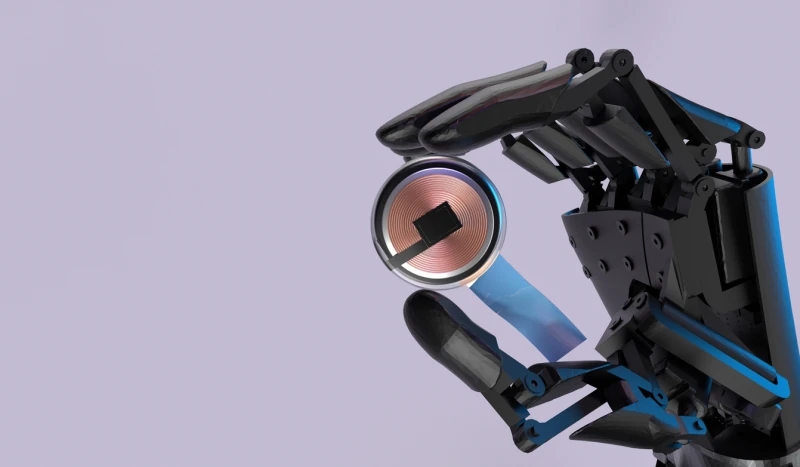Navigating the Brain-Computer Interface Frontier: An Interview with ex-NASA Expert
In a detailed interview, Dr. Brian Jamieson, founder and CTO of Diagnostic Biochips (DBC), delves into the evolving landscape of brain-computer interfaces (BCIs), a domain where the fusion of neuroscience and cutting-edge technology is opening new avenues for human-computer interaction.
Diagnostic Biochips specializes in developing advanced brain-computer interface systems, utilizing high-density silicon electrode arrays and hybrid CMOS integration for precise neural recording and stimulation.
Diagnostic Biochips' technology is aimed at applications in neuroscience research, clinical diagnostics, and potentially therapeutic interventions, particularly focusing on enhancing brain interfacing for neurological studies and advancing drug discovery processes.

Watch the full episode (42 min): Ex-NASA Expert Unveils Everything You Need to Know About Brain-Computer Interfaces
What is Brain Computer Interface technology?
The brain-computer interfaces (BCI) industry encompasses companies and research institutions dedicated to developing technologies that enable direct communication pathways between the brain and external devices, aimed at enhancing, restoring, or augmenting human cognitive or sensory-motor functions.
On the technical side, Brian highlights the use of silicon in developing high-density electrode arrays for invasive BCIs, exploiting its biocompatibility and robustness for precise neural interfacing.
These arrays incorporate microfabrication techniques to target specific brain regions or neuronal clusters with exceptional accuracy. The integration of complementary metal-oxide-semiconductor (CMOS) technology enhances signal processing directly at the source, improving the signal-to-noise ratio for clearer neural signal interpretation.
This hybrid approach combines MEMS silicon electrodes with advanced CMOS electronics, aiming for a synergistic effect that maximizes both the physical resilience of the electrodes and the efficiency of electrical signal capture and stimulation.
BCIs broadly fall into invasive and non-invasive technologies.
Invasive BCIs
Invasive BCI technology involves directly interfacing with the brain tissue by implanting electrodes or other devices within the skull.
Brian emphasizes the unparalleled resolution and specificity this method offers, allowing for precise communication with individual neurons or specific neuronal networks.
This direct interface facilitates detailed recording and stimulation capabilities that are crucial for applications requiring fine motor control, such as advanced prosthetics or restoring function in individuals with paralysis.
The invasive nature of these technologies, however, introduces challenges related to surgical risks, long-term biocompatibility, and the body's immune response, which can lead to issues like biofouling and electrode degradation over time.
Non-Invasive BCIs
On the other hand, non-invasive BCIs, which include technologies like EEG (electroencephalography), operate from outside the skull, avoiding the risks associated with surgical implantation.
While safer and easier to use, non-invasive methods are limited by lower resolution and the inability to access the depth of brain activity with the same fidelity as invasive methods.
The signals captured by non-invasive BCIs are more generalized and subject to interference from the skull and other tissues, making it challenging to achieve the precise control necessary for certain applications.
Despite these limitations, non-invasive BCIs hold significant promise for applications that require broader, less specific brain activity monitoring, such as detecting general patterns of brain activity for neurofeedback or therapeutic interventions.
Technical challenges of brain computer interface implementations
Jamieson notes that while significant progress has been made in minimizing the risks associated with invasive brain implants, there is a lot of work yet to be done with respect to solutions for long-term viability and biocompatibility.
For instance, when electrodes are implanted in the brain, the body's immune response can lead to the accumulation of proteins on the surface of these electrodes, a phenomenon known as biofouling.
This protein buildup raises the impedance of the electrode, which is detrimental because it increases the resistance to the electrical signals that are being recorded or stimulated by the device. High impedance makes it challenging to establish a low-resistance path between the electrode and the neuron it aims to interface with, which is crucial for the efficient transmission of electrical signals.
This issue is particularly pronounced with electrodes that are designed to interact at the scale of individual neurons. The smaller the electrode, the more susceptible it is to the effects of biofouling because even a thin layer of protein can significantly interfere with the electrode's function.
Jamieson highlights that while there's an observable initial flare-up of tissue reaction following implantation, the body generally accepts the implant over time. However, the micro-level interactions at the electrode surface, specifically cell death and protein buildup, remain significant challenges.
Neuralink is a big deal, but not the only one in the BCI field
Dr. Jamieson provides a nuanced view of Neuralink's role in the brain-computer interface industry, in the context of the invasive BCI sector.

He acknowledges Neuralink's significant contribution to bringing attention to the BCI field, largely due to its high-profile nature and association with Elon Musk. This attention, he suggests, serves as both a catalyst for innovation and investment in BCIs and a bellwether for the technology's readiness for mainstream applications.
Jamieson is careful to contextualize Neuralink within the broader landscape of BCI development, indicating that while Neuralink has achieved notable milestones, it is not the sole innovator in the field.
He references other companies, such as Paradromics and BlackRock Neurotech, which have also made substantial contributions to BCI technology and its application.
These companies, along with Diagnostic Biochips, are working on various aspects of BCI technology, from invasive neural implants to high-density electrode arrays. Each , each contributing to the advancement of the field in unique ways and for a diverse set of applications, from clinical interventions and prosthetic control to neurological research and drug development.
RELATED: Neuralink's Journey and the Broadening Horizons of Brain-Computer Interface Technology
Also, Brian addresses the potential risks of a single company, like Neuralink, dominating public and investor perceptions of the BCI field. He notes that while Neuralink's visibility can benefit the industry by attracting interest and resources, it also carries the risk of overshadowing other valuable contributions and approaches, or creating unrealistic expectations about the technology's current capabilities.
The Untapped Potential of BCI for Creating Neuronal Network Assays in Neuroscience Drug Discovery
Brian illuminates a significant yet underexplored territory where the fields of brain-computer interfaces (BCIs) and pharmaceutical research intersect, particularly in the realm of neuropsychiatric drug discovery.
He observes that the pharma industry, when doing drug discovery, tends to leap from single-cell or molecular studies directly to broad behavioral animal models failing to capture the essential “middle ground” of neuronal network function.
This approach, according to Brian, overlooks the intricate interplay of neuronal networks that could offer profound insights into how potential therapeutic compounds might influence brain function at a circuit level.
In addressing this challenge, Brian envisions a future where advancements in BCI technology could offer scalable, realistic 3D brain models for drug testing.
Such models would enable a detailed analysis of how compounds affect neuronal circuits, potentially revolutionizing the way drugs are screened and developed for psychiatric and neurological conditions.
He highlights the importance of developing new assays that can provide this level of insight in a high-throughput, ethically sound manner, suggesting that collaboration between BCI technologists and pharmaceutical researchers could be key to unlocking these innovations.
Looking into the future
Jamieson's insights underscore the complexity and promise of BCIs, a field at the intersection of technology, biology, and ethics. As DBC and other innovators push the boundaries of what's possible, the next decade promises to bring unprecedented advances in our ability to interface with the human brain, opening new possibilities for medical treatment, research, and even enhancing human capabilities.
Looking to the future, Jamieson is optimistic about the potential for BCIs to revolutionize treatments for psychiatric conditions and enhance the capabilities of prosthetic devices.
Watch the full episode (42 min): Ex-NASA Expert Unveils Everything You Need to Know About Brain-Computer Interfaces
Topic: NeuroTech